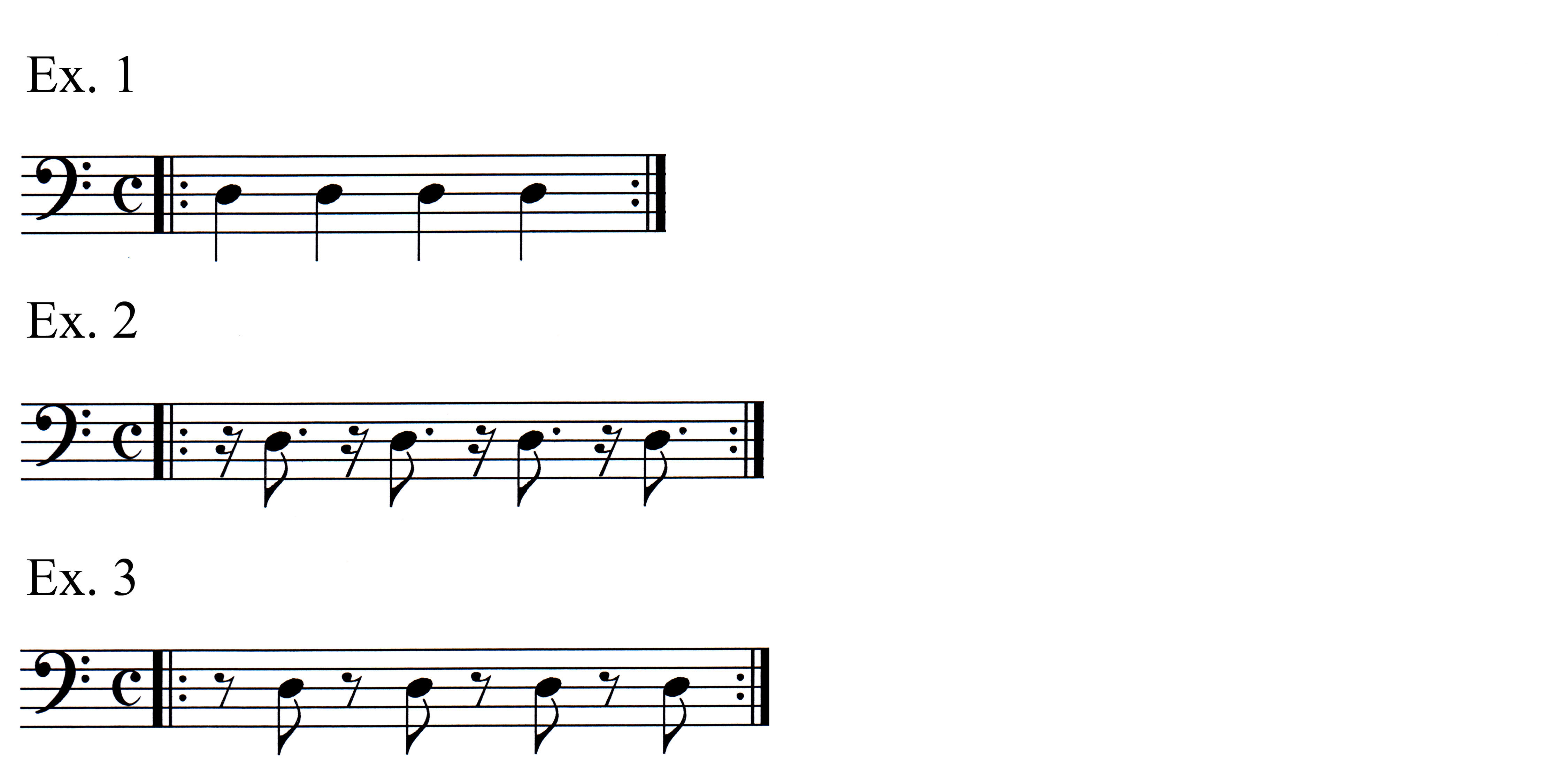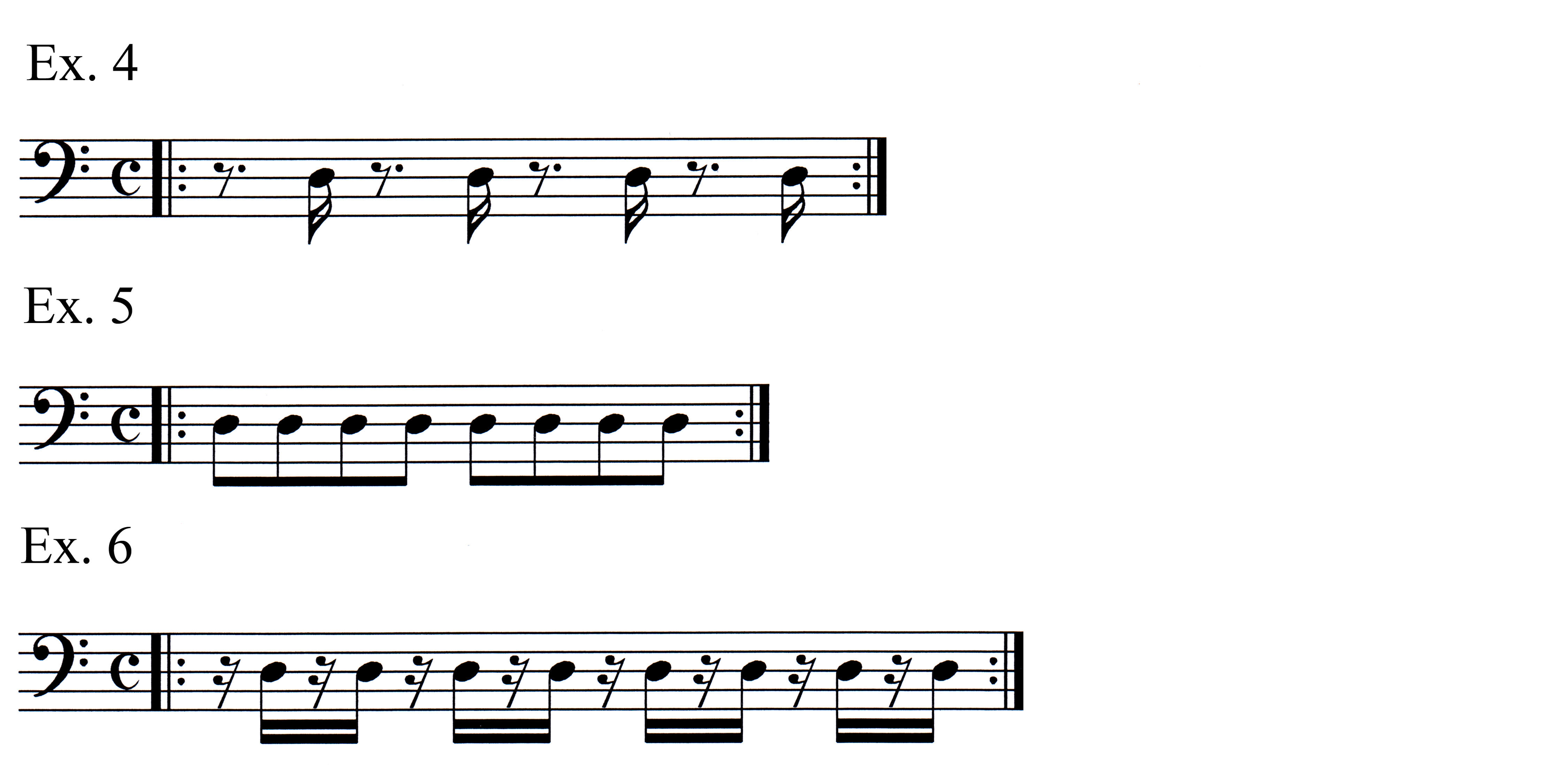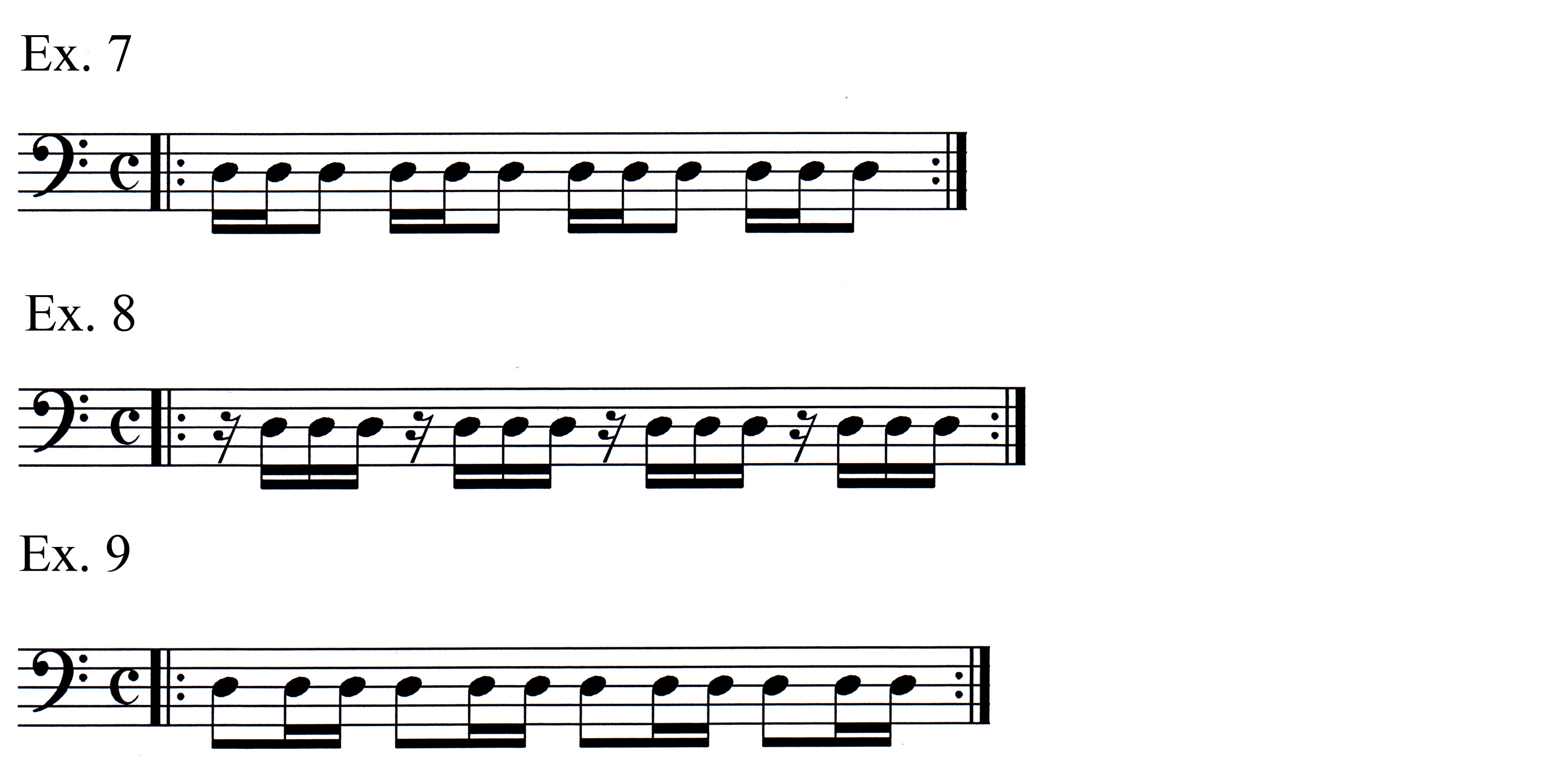
Syncopation And Counting, Pt. 2
In this second part on syncopation, we are going to focus on elements common to both bass players and drummers - understanding note placement, how time is divided. Without really getting this straight, you will struggle.
I am also a long time drummer. And this helps me as a bass player, because I understand keeping a beat and playing really odd note placements not common to other instruments as a rule. What does this have to do with playing bass? Everything.
As a bass player, you are part of the rhythm section, not the "star" of the show. You are part of the mechanism that "drives the bus". In other words, you must lock in with the drummer to create a solid driving mechanism which propels
the song(s) forward. And this means you must know how to divid time properly and consistently well.
Now, Benny Greb, an amazing drummer, put out a really great video which was designed, first and foremost, to help players understand the importance of properly dividing time. I have adapted this information for the purposes of creating this lesson,
to help you get your time division chops truly sharp and precise.
So, one at a time, put everything to the metronome at a tempo you can manage comfortably. To begin with, play each exercise first by simply clapping to the beat, or part of the beat represented in the measure. Do each exercise for a minute or two
nonstop.
Here are the first three exercises.

Okay, you've clapped along, getting the feel correct. Now pick up your bass and play a single fretted note in the same way over the three exercises. Do each exercise individually for a minute without stopping.
Do not move forward to the next set of exercises until you have these first three firmly understood.
Here is the next set of three exercises. Do with these exactly the same as before; begin with clapping along for a minute or two nonstop, then introduce your bass with a fretted note for the same duration - one exercise at a time.

Again, do not move forward until you have this second set of exercises firmly in hand.
Here is the next set of exercises. You know the drill.

What are you learning from these exercises?
For me, both on the drum kit and on bass, I learned that as good as my time sense is, there is always room for improvement. I regularly practice with a metronom, particularly on the drum kit. These exercises challenged me to get my note placement more precise, more accurate than it already was.
It's humbling to practice such a "simple" exercise and learn you really suck more than you believed. And we have to be honest with ourselves as musicians. As mentioned in the last installment, drummers are not in charge of keeping the beat. It is not their job to keep the band on beat. It is everyone's job to do that, to contribute to time keeping during a song.
This and the last installment are here to drive home the point.
This is an important lesson. And it bears stressing that you should revisit this lesson often because it is important to remind yourself how important time keeping, note placement, is in playing music. And, it is always good practice to ensure you don't fall off the wagon, so to speak, and to do continuing checks and balances in ensuring you are not the reason a song is dragging, or speeding up.
Because it is your responsibility as much as anyone else in the band to keep that from happening.
Next time!